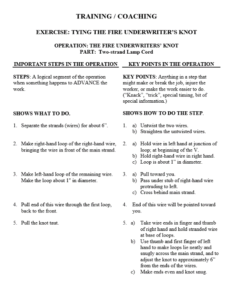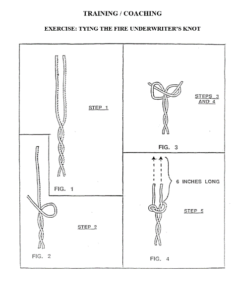The Seven Steps for Training & Coaching Employees
Follow these seven steps for training and coaching employees and dramatically improve the effectiveness of your training and coaching, and ultimately the performance of employees.
More than ever, ongoing training and development and coaching of employees is essential for organizational and business growth and success.
It’s the responsibility of the manager or supervisor to ensure that employees are being trained properly. If the task of training is being delegated to an employee, then that employee needs to be taught the seven steps.
I’ve created a worksheet that you can use to plan out the seven steps. It helps when you write things down rather than trying to think it through. Writing it down makes it a commitment and clarifies what needs to be done.
Here are the seven steps:
- Explain the objective and importance of the task
 In our training program Style of Leadership & Team Development we teach the participants how to tie a fire underwriters knot. If this is done incorrectly on a construction site it could result in a fire and it would undermine the insurance policy. Thus, explaining the objective and importance of the task puts it in the proper perspective.
In our training program Style of Leadership & Team Development we teach the participants how to tie a fire underwriters knot. If this is done incorrectly on a construction site it could result in a fire and it would undermine the insurance policy. Thus, explaining the objective and importance of the task puts it in the proper perspective.
- Explain the procedure
You can use written instructions as an aid and the reference for after the training. When we teach how to tie the knot we handout instruction sheet, but most people can’t figure it out just from reading and following the instructions. We also handout a diagram and still people have difficulty succeeding in tying the knot correctly.
- Make a demonstration
Demonstrating correctly how to perform the task is an essential step in having the employee then perform it themselves.
- Observe the person in training
Have the person perform the task and observe them.
- Give immediate and specific feedback (continue coaching or acknowledge success).
Reinforce what the person is doing well and recognize success. Continue coaching until the person gets it right.
- Express confidence in the ability of the person to succeed
People have varied levels of confidence when learning a new task. Express your confidence according to the needs of each person.
- Get agreement on follow-up action.
Follow-up essential to ensure that the task or skill is being applied properly on the job. You can go through all the previous steps and fail in the training follow-up is not done.
Anyone can follow these steps and map out a training plan whether it be for a manual task, technical skill or even a behavioral training such as active listening.
It’s great to follow these steps when delegating a new task or responsibility to somebody. Delegation is different than simply assigning tasks to someone. Delegation involves new levels of responsibility or skill development and thus training should always be considered for successful delegation.
She was a task or skill that you want to train somebody on, download the worksheet and start planning your next training.
